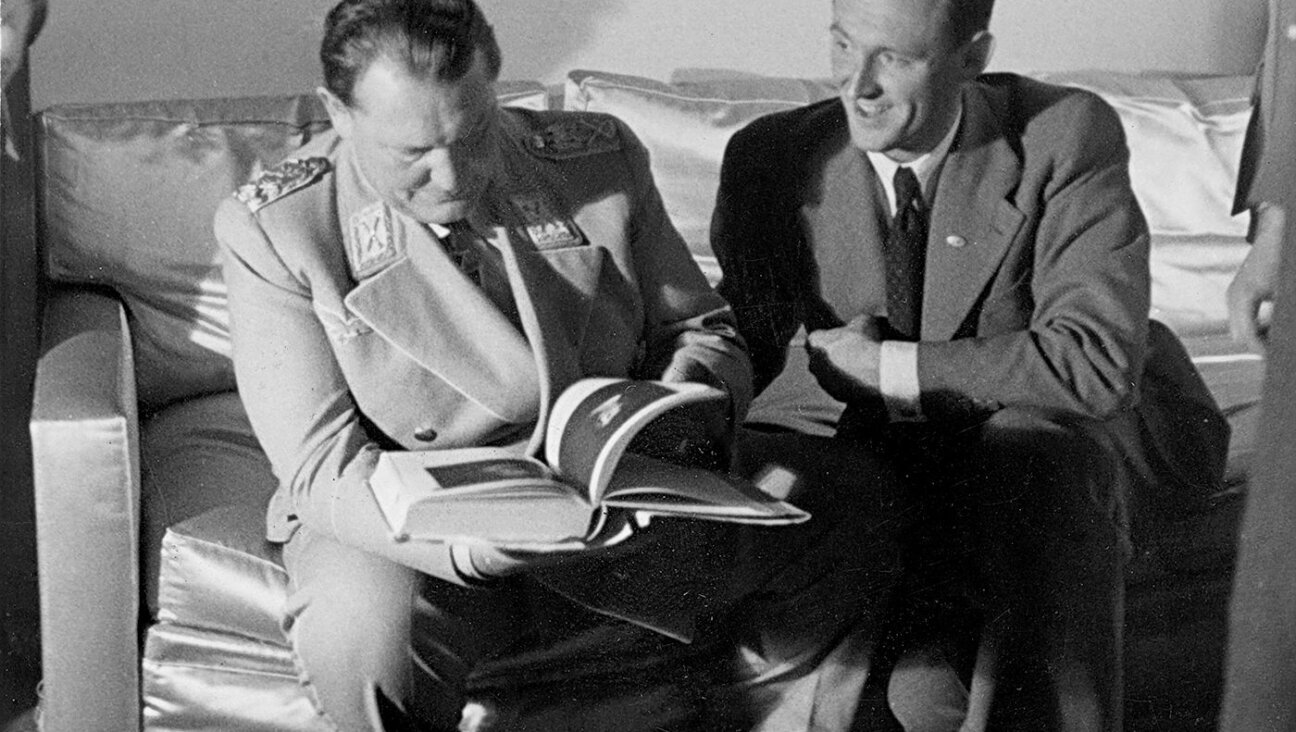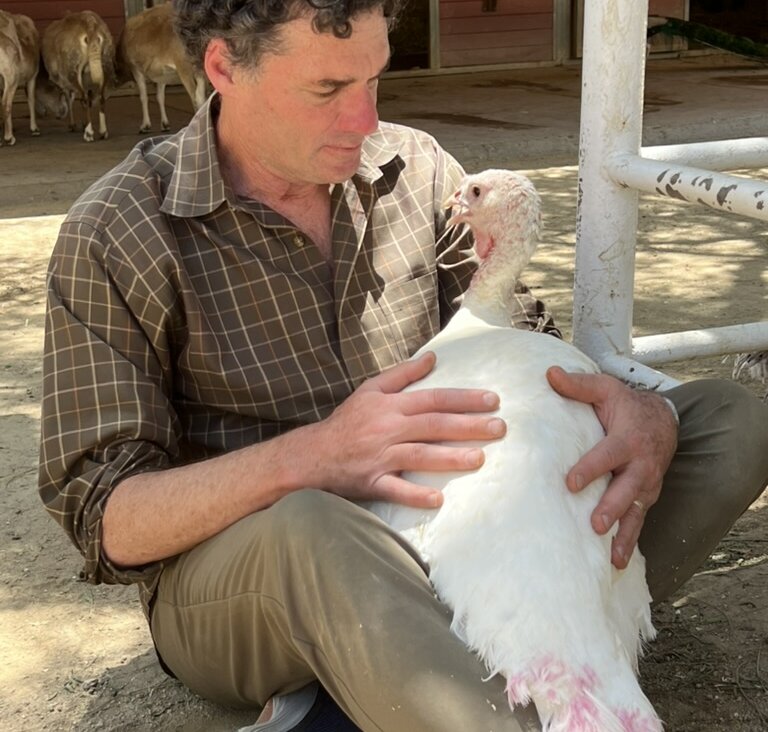Is Dr. Heimlich’s Maneuver All It Was Cracked Up To Be?

Heimlich Maneuver Image by Getty Images
Dr. Henry Heimlich: Were his Maneuvers Beneficial or Misbegotten?
Some doctors help humanity, although not always in the manner they intended. Dr. Henry Judah Heimlich, the American Jewish thoracic surgeon who died on Saturday, December 17, at age 96, entered popular culture through his much-publicized Heimlich Maneuver, or abdominal thrusts to stop choking. The lifesaving technique was featured in such Hollywood comedic films as “Mrs. Doubtfire”; “Groundhog Day” and “50 First Dates”. Dr. Heimlich’s highly serious aims were recounted in his 2014 memoir, “Heimlich’s Maneuvers: My Seventy Years of Lifesaving”. Born in Wilmington, Delaware in 1920, Heimlich courted controversy over many years, in the applicability of his maneuver, as well as later attempts to cure cancer and AIDS.
The dramatic vehemence of his assertions and their dismissal by critics seemed appropriate for the swashbuckling physician, whose autobiography recounts how as a Jewish student, he was frustrated in his ambition to be drum major of the Cornell University Big Red Marching Band. In 1951, he married into a celebrity family when he wed the daughter of the ballroom-dancing superstar Arthur Murray (born Moses Teichman in Galicia; 1895–1991).
Alert to the power of popular culture, Heimlich — who made personal appearances on the late night shows of Johnny Carson and David Letterman – first published his opinions about the use of the maneuver in a non-scholarly article in “Emergency Medicine” in 1974. In subsequent years, the American Heart Association and American Red Cross have modified their choking-rescue guidelines, from first recommending a series of back blows, with abdominal thrusts only as an alternate technique. Between 1986 and 2005 only the Heimlich Maneuver was recommended, but in 2006, recommendations reverted to abdominal thrusts, abandoning the name “Heimlich Maneuver.”
The reasons for this demotion involved lifesaving data as well as Dr. Heimlich’s vehement proselytizing of his maneuver as a treatment for drowning, heart attack, asthma, and cystic fibrosis, against expert medical opinion. Further controversy occurred over Dr. Heimlich’s promotion, starting in the early 1980s, of malariotherapy, or deliberately infecting patients with malaria to treat cancer, Lyme disease, and the HIV virus. Despite quasi-universal rejection of this approach, Heimlich’s Institute, a subsidiary of Deaconess Associations of Cincinnati, conducted malariotherapy trials with patients in Ethiopia and China.
Asked about these methods in 2014, Dr. Heimlich told “The Boston Globe” that Julius Wagner-Jauregg, a Nobel-prizewinning Austrian doctor, used malaria therapy as a treatment for paralytic dementia caused by late-stage syphilis. Dr. Heimlich did not mention that Wagner-Jauregg’s methods became obsolete with the widespread use of penicillin in the 1940s. Nor did he note that Wagner-Jauregg (1857–1940) was generally discredited in the medical community as a fervent Nazi, anti-Semite, and supporter of eugenics. Instead, Dr. Heimlich asserted about malariatherapy: “We did some research in China on HIV patients, because we weren’t allowed to conduct studies here in America… I think it’s still worth researching to see if it works for other diseases.”
Anecdotal evidence, rather than scientific studies, provided the basis for much of Dr. Heimlich’s celebrity. The Deaconess Heimlich Institute website proclaims that among those saved from choking by the Heimlich Maneuver were such celebrities as Cher, Ronald Reagan, Ed Koch, Elizabeth Taylor, Goldie Hawn, Walter Matthau, Carrie Fisher, and Jack Lemmon. In a 2014 article in “The New York Post,” Heimlich reiterated these names, adding others: Ellen Barkin, Nicole Kidman Halle Berry, and cookbook author Joan Nathan. Compared to this starry world of celebrity rescuees, do the fates of anonymous AIDS patients in China and Ethiopia carry any weight?
They do with the doctor’s son Peter Heimlich, who has energetically contested his father’s legacy starting in 2002, in a website and a series of interviews. Not only are experimentees in impoverished countries defended, but also a Romanian physician little known outside the medical world, who circa 1950 invented a procedure to replace the esophagus, despite Dr. Heimlich’s occasional claims to have devised the operation himself. Noted physicians who pointedly criticized Dr. Heimlich’s methods and conclusions included the Mayo Clinic’s Roger D. White; the National Council Against Health Fraud’s Robert S. Baratz; the Public Citizen’s Health Research Group’s Peter Lurie; the American Heart Association’s Charles W. Guildner; and several others.
Fiery worded accusations are out of place in most obituaries. Some journalists have suggested that since the term “abdominal thrusts” is now favoured by health organizations over the once-universal Heimlich Maneuver, that the doctor’s fame will fade in future years. The ultimate benefit of Dr. Heimlich’s years of renown may be to focus awareness on the ongoing dangers of choking on food, since health agencies report that in America, around 3,000 adults die annually from this cause. If the notoriety of Dr. Heimlich and his maneuver, bolstered by film and TV publicity, makes fressers take smaller bites to save their lives, then his legacy may indeed have been beneficial.
Benjamin Ivry is a frequent contributor to the Forward.
A message from our CEO & publisher Rachel Fishman Feddersen

I hope you appreciated this article. Before you go, I’d like to ask you to please support the Forward’s award-winning, nonprofit journalism during this critical time.
We’ve set a goal to raise $260,000 by December 31. That’s an ambitious goal, but one that will give us the resources we need to invest in the high quality news, opinion, analysis and cultural coverage that isn’t available anywhere else.
If you feel inspired to make an impact, now is the time to give something back. Join us as a member at your most generous level.
— Rachel Fishman Feddersen, Publisher and CEO
























